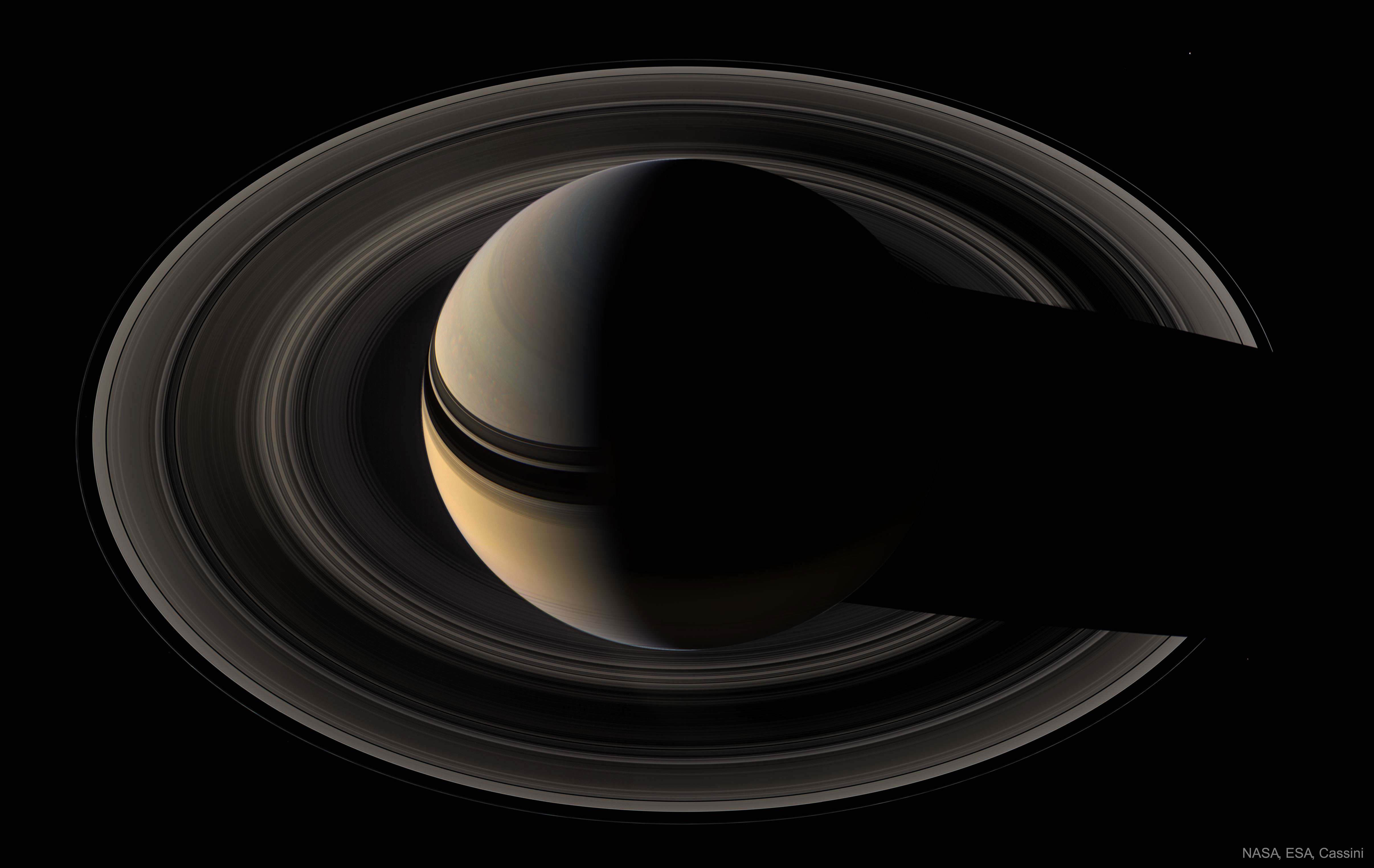2019 July 7
Crescent Saturn
Image Credit: NASA, ESA, SSI, Cassini Imaging Team
Explanation: Saturn never shows a crescent phase — from Earth. But when viewed from beyond, the majestic giant planet can show an unfamiliar diminutive sliver. This image of crescent Saturn in natural color was taken by the robotic Cassini spacecraft in 2007. The featured image captures Saturn’s majestic rings from the side of the ring plane opposite the Sun — the unilluminated side — another vista not visible from Earth. Pictured are many of Saturn’s photogenic wonders, including the subtle colors of cloud bands, the complex shadows of the rings on the planet, and the shadow of the planet on the rings. A careful eye will find the moons Mimas (2 o’clock) and Janus (4 o’clock), but the real challenge is to find Pandora (8 o’clock). Saturn is now nearly opposite from the Sun in the Earth’s sky and so can be seen in the evening starting just after sunset for the rest of the night.
眉月状的土星
影像提供: NASA, ESA, SSI, Cassini Imaging Team
说明: 从地球上看出去,不可能见到眉月状的土星。 然而,从土星的后方往外看,这颗巨行星倒是可以拥有我们不熟悉的银月样貌。 上面这张自然色泽的眉月状土星影像,是在2007年由卡西尼号宇宙飞船所拍摄。 影像记录了在背阳环系面见到的壮丽土星环,而这是另一个地球不可见的景观。 影像的其他美丽奇景,还包括色泽微妙的云带、环系投射在土星上的暗影,与及映在环系上的土星影子。 细心的人不难找到2点钟方向的土卫一及4点钟方向的土卫十,但真正有挑战性的,是8点钟方向的土卫十七。 在地球的天空中,土星目前位在与太阳反向的冲,土星日落即升起并彻夜可见。



